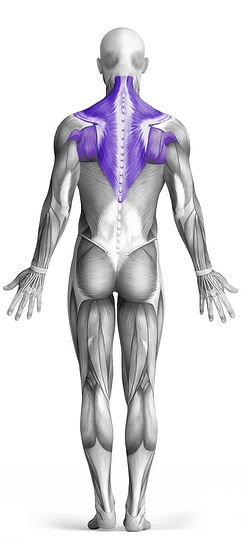Cable Straight Back Seated Row 101 Video Tutorial
0

Exercise Synopsis
Target Muscle Group
Upper Back
Execution
Compound
Force Type
Pull (Bilateral)
Required Equipment
Cable Machine
Fitness Level
Intermediate
Variations
Alternatives
None
Timer
Hour
Minute
Second
Stopwatch
00:00:00:00
Overview
The Cable Straight Back Seated Row is a compound exercise that primarily targets the upper back while also engaging the lats, traps, and biceps. Performed on a cable machine, this movement emphasizes controlled resistance and a consistent range of motion, allowing for focused muscle engagement and improved stability. The seated position with a straight back helps maintain proper posture, minimizing the risk of lower back strain while maximizing the activation of the target muscles. Overall, it’s an effective exercise for building upper-body strength and enhancing back musculature.
How to Perform
Set Up the Machine: Adjust the cable machine so the pulley is at its lowest position, and securely attach a straight bar to the cable.
Position Yourself: Sit on the bench with your feet planted firmly on the floor and your knees bent to ensure stability.
Grip the Bar: Using an overhand grip, hold the bar with your hands positioned about shoulder-width apart.
Engage Your Core: Sit tall with a straight back and activate your core muscles to maintain proper posture throughout the movement.
Initiate the Pull: Draw the bar steadily toward your chest, ensuring that your elbows remain close to your body.
Peak Contraction: At the end of the pull, focus on squeezing your shoulder blades together to fully engage the upper back muscles.
Return Slowly: Gradually extend your arms to return the bar to the starting position, controlling the movement to avoid momentum.
Maintain Rhythm and Form: Repeat the exercise for the desired number of repetitions, ensuring you breathe properly—exhale during the pull and inhale on the return—to maximize both effectiveness and safety.
★ Bonus: For exercises that involve external weights (such as dumbbells, barbells, or machines), the One Rep Max (1RM) calculator can help you estimate your maximum lifting capacity. Use it to track your strength progress and adjust your training for optimal results.
Tips
Set the cable machine to a low position and attach a straight bar securely.
Sit with your back straight, feet flat on the floor, and knees bent for stability.
Grasp the bar with an overhand grip, keeping your hands shoulder-width apart.
Engage your core to maintain proper posture throughout the exercise.
Pull the bar steadily toward your chest, ensuring your elbows remain close to your body.
Focus on squeezing your shoulder blades together at the peak of the movement.
Control the return by slowly extending your arms back to the starting position.
Use a smooth, deliberate motion to maximize activation of the upper back, lats, traps, and biceps.
Coordinate your breathing by exhaling during the pull and inhaling during the return.
How Not to Perform
Keep Your Back Neutral: Avoid rounding your spine; slouching can lead to back strain and reduce upper back engagement.
Control the Movement: Don’t use jerky or rapid motions; maintain a slow, deliberate pace to keep tension on the target muscles.
Choose Appropriate Weight: Refrain from selecting weights that force you to compromise form, which may lead to injury and ineffective workouts.
Engage Your Core: Don’t neglect your core; failing to stabilize your torso can shift the focus away from your upper back and strain your lower back.
Avoid Relying Solely on Your Arms: Don’t let your arms do all the work; ensure you are actively using your lats, traps, and upper back muscles.
Prevent Elbow Flaring: Avoid letting your elbows flare out excessively; keep them close to your body to optimize muscle activation.
Do Not Hold Your Breath: Ensure you maintain a steady breathing pattern; improper breathing can compromise your form and lead to fatigue.
Don’t Overextend at the Start or Finish: Avoid abrupt locking or hyperextending your joints during the pull or release, which can waste energy and risk injury.
Variations
Variations of fitness exercises refer to different ways of performing a specific exercise or movement to target various muscle groups, intensities, or goals. These variations aim to challenge the body differently, prevent plateaus, and cater to individuals with varying fitness levels.
Alternatives
Alternative exercises in fitness refer to different movements or activities that target similar muscle groups or serve the same training purpose as the primary exercise. These alternative exercises can be used as substitutes when the original exercise is unavailable or challenging to perform due to various reasons such as equipment limitations, injuries, or personal preferences.








